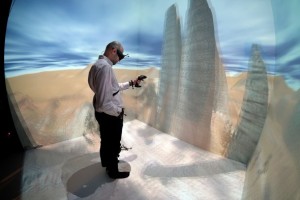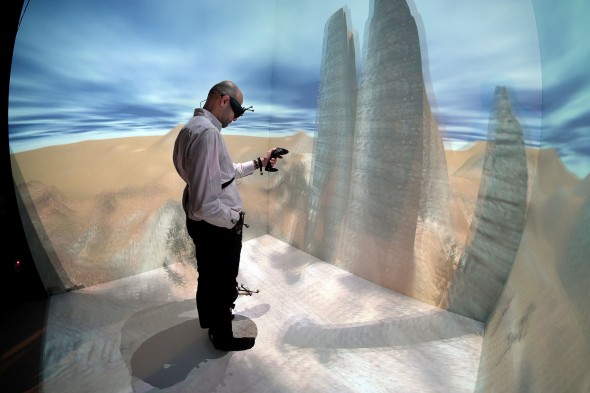
A Simple Trick to Avoid Losing Your Lunch While in Virtual Reality
A Simple Trick to Avoid Losing Your Lunch While in Virtual Reality
Motion sickness is a big potential obstacle for VR, but researchers have come up with a simple way to keep people from feeling queasy.
If you’ve tried out any of the slew of new virtual reality devices, you’ll know that they can be incredibly convincing—but they can also cause you to lose touch with your lunch. Now, a new trick adjusts the user’s field of view on the fly to help alleviate the issue.
Motion sickness can occur when the body receives mixed messages about movement: the eyes may see one thing, while the fluid swilling around within the inner ear might tell another story. When the two don’t marry up, people feel uncomfortable, disoriented, and sometimes nauseous. So a Columbia University team decided to focus on what could be done to change the visual cues seen by a user when a VR environment didn’t tally with the real-world situation.
Their solution is a simple one. When virtual activity becomes more energetic than the sitting or standing of the user—running or jumping around the polygonal world, say—the team simply narrows the field of view so that the wearer of the headset sees less peripheral detail. In turn, the visual cues suggesting motion are dialled down a little.

In a series of tests, 30 volunteers used the VR system to explore a digital landscape—using the dynamically blinkered system one day then an unrestricted system the next. When the participants used the system with view restrictions, they stayed in the VR environment for longer and scored the experience as being more comfortable.
Two different versions of the device were also tested: one with a more subtle narrowing effect than the other. The majority of people didn’t notice the less extreme of the two versions, and those that did unanimously claimed to prefer it to the unrestricted VR system.
It’s not the first attempt to try and alleviate the effects of motion sickness in VR. A team from Mayo Clinic has been repurposing a technique that’s currently used to help military pilots avoid nausea. But while effective, that approach uses electrodes to stimulate the body, fooling its sense of balance into sensing motion where none exists.
By comparison, then, the new system seems like a simple yet effective means of controlling nausea among VR users.
(Read more: Engineering & Technology, “Zapping Your Skull Could Alleviate Virtual-Reality Motion Sickness,” “Oculus Rift Is Too Cool to Ignore,” “Virtual Reality Actually Feels Real When It Uses Physics”)

Leave a Reply